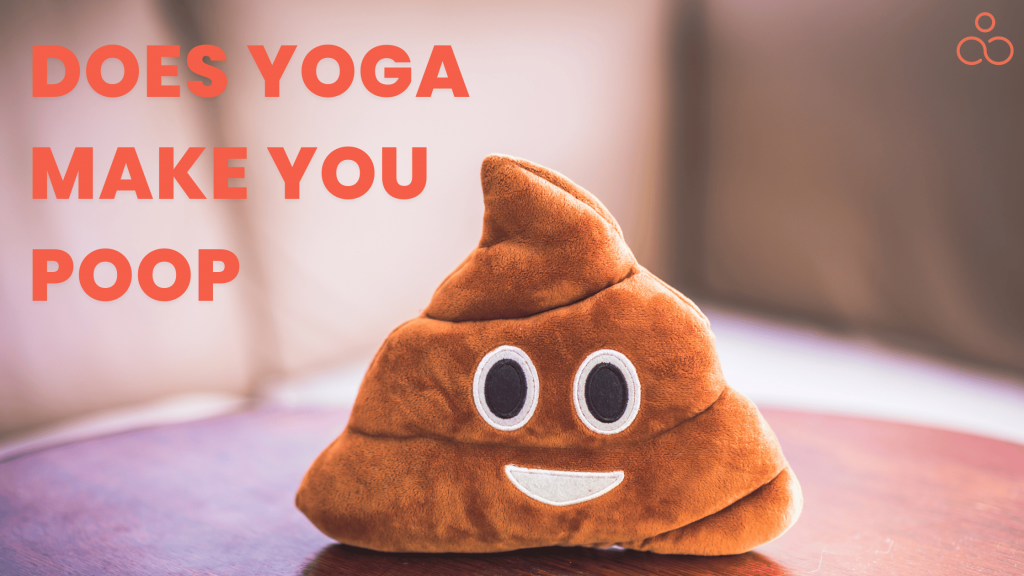You have probably heard that Yoga can surely help digestion, but on a serious note does yoga make you poop? You may have seen it in movies or heard it in stories, but how true is it? Well, the answer may surprise you. While it’s not literally true that Yoga will make you go to the bathroom, there is some truth to the idea that Yoga can help with digestion – yes, that can lead to pooping!
What is the general process of pooping?
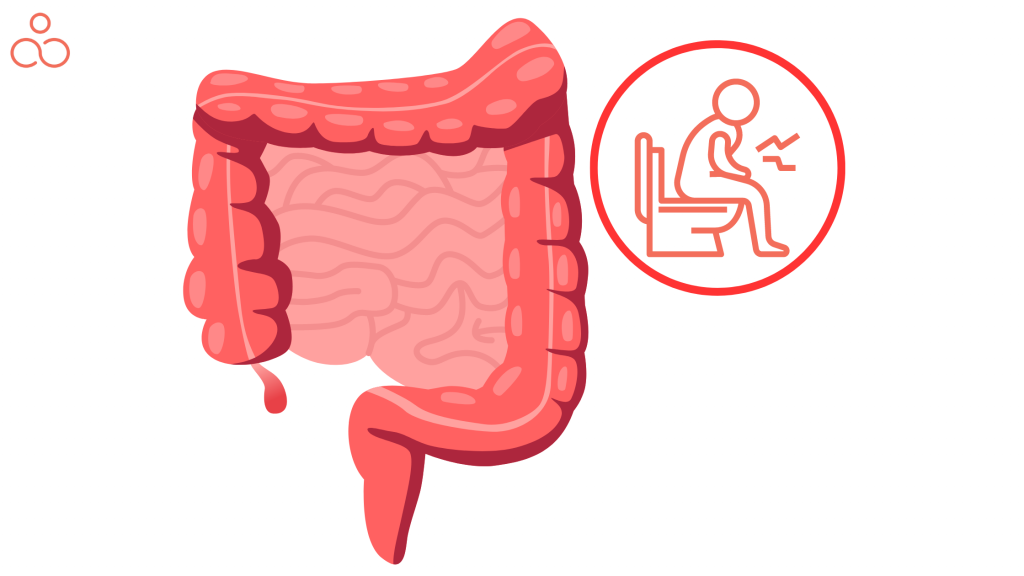
Well, we definitely know how uncomfortable it may be to read the heading above due to the term “”pooping””. Yet, we do not think it should be a taboo topic to discuss, as we believe that a productive pooping experience leads to a productive life. Most importantly, excreting waste from the body is a natural and significant element of life. So why be embarrassed to openly discuss it? Pooping is the excretion of waste from the body. It is a natural part of a sound digestive system. It also promotes the flushing out of toxins from the body. The act of pooping can come in different forms, such as tiny pellets, loose stools, or even diarrhea. Comprehending the science and history of pooping can help us comprehend how the body functions and how we can enhance our pooping experience.Two types of processes of pooping are: Physical process and Emotional process. Let’s dive deeper into these two processes:
The physical process of pooping
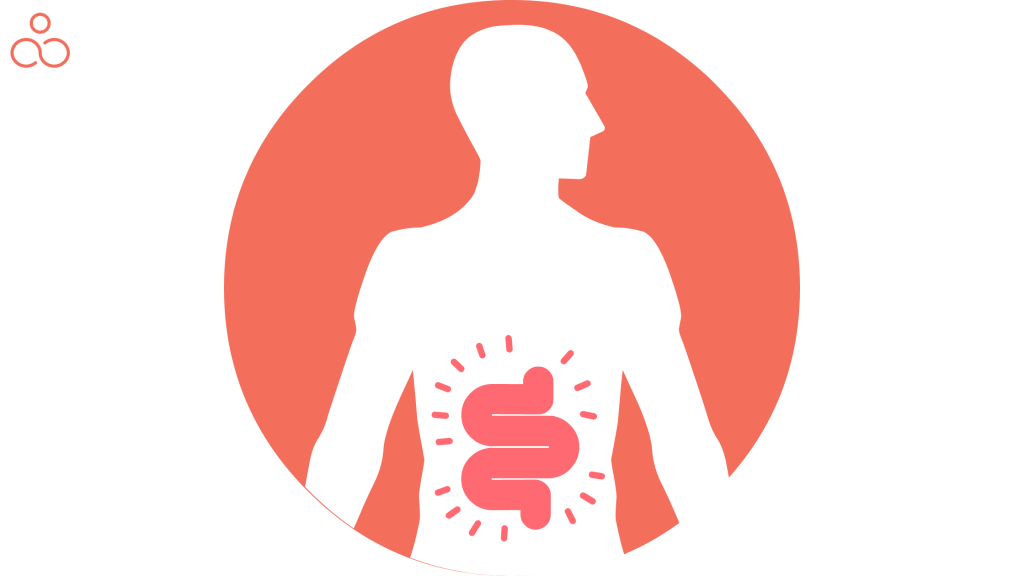
Pooping is a natural behavior that has been around since the dawn of time. It has been examined in many areas of science, including physiology, anatomy, and zoology. In the human body, the act of going to the bathroom is made possible by the rectum, the terminal segment of the large intestine, which completes the digestive system. This organ is in charge of storing and removing waste material from the body. When we go to the bathroom, the rectal muscles spasm and relax to expel the waste material. This operation is regulated by the autonomic nervous system, a branch of the nervous system that operates involuntary actions such as breathing and digestion.
The psychological process of pooping
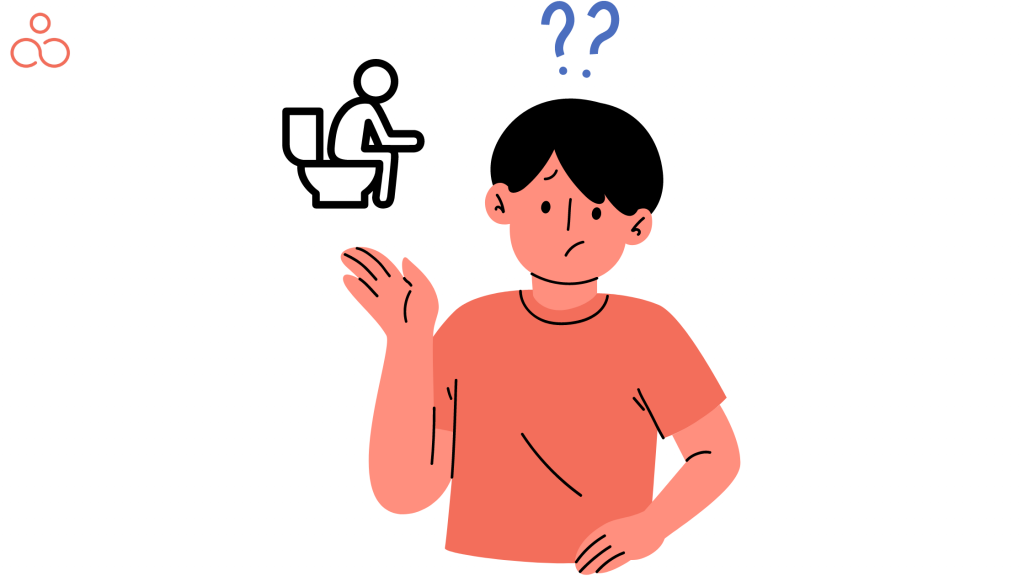
Going to the bathroom is no ordinary event! There’s a lot more happening than just the physical act of pooping. It’s a complex process involving the release of feel-good hormones like endorphins and other neurotransmitters. The psychological benefits are enormous – it can help reduce stress, anxiety, and depression. It also relieves physical pain and discomfort, and you get a sense of accomplishment after every successful poop. All in all, it’s a fantastic experience.
Does Yoga make you poop?
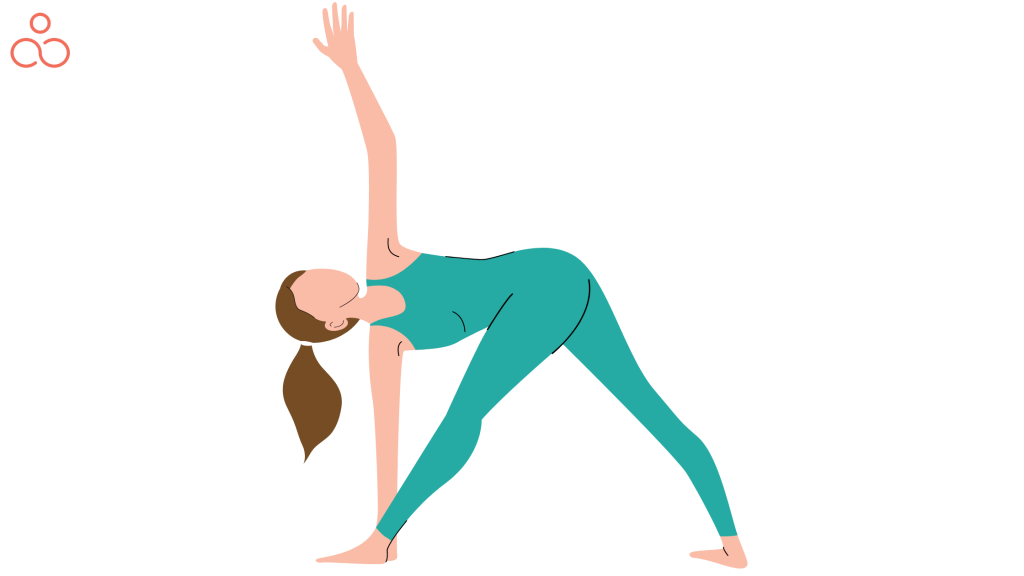
Yoga can help you poop more regularly and have lots of positive effects on your digestive system, like regular bowel movements. Unclenching your abdominal muscles can lessen constipation and make it easier for you to have a bowel movement. Plus, by reducing stress and anxiety, Yoga can help you feel more comfortable. You can even strengthen your core muscles to help support better digestion. Last but not least, yoga poses can help massage your intestines and stimulate peristalsis, which helps your food move through your digestive system. So give Yoga a try and get ready to let it all out!
How does Yoga make you poop?
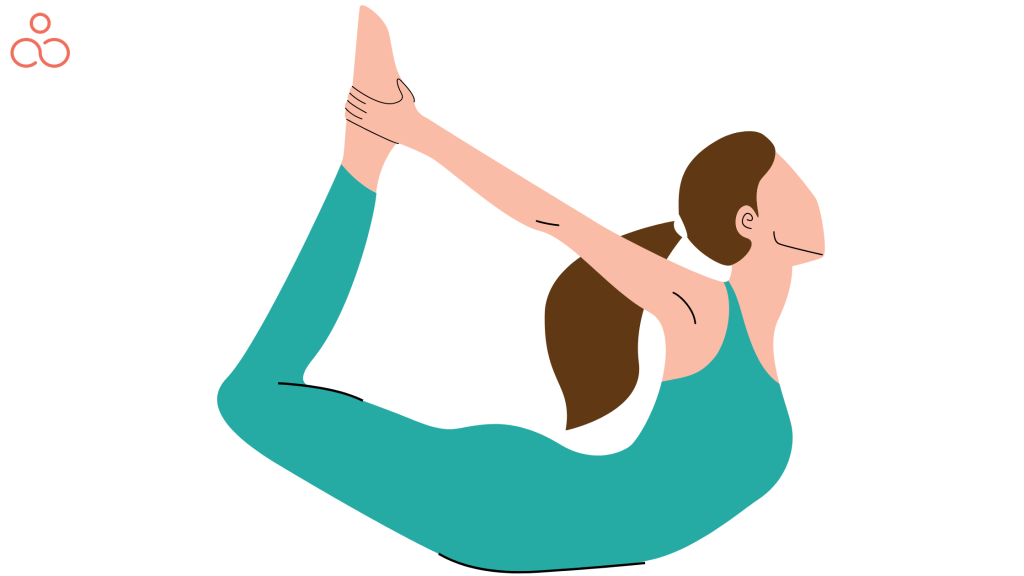
Practicing Yoga can help stimulate your digestive system and promote a healthy gut. It can help increase the production of digestive enzymes, which can help you move your bowels more effectively. In addition, some poses can help increase blood flow to the intestines and help with digestion. Furthermore, Yoga can help reduce stress, which is known to positively affect digestion. Therefore, doing Yoga can help you poop more regularly.
Research studies on yoga being helpful for bowel movements
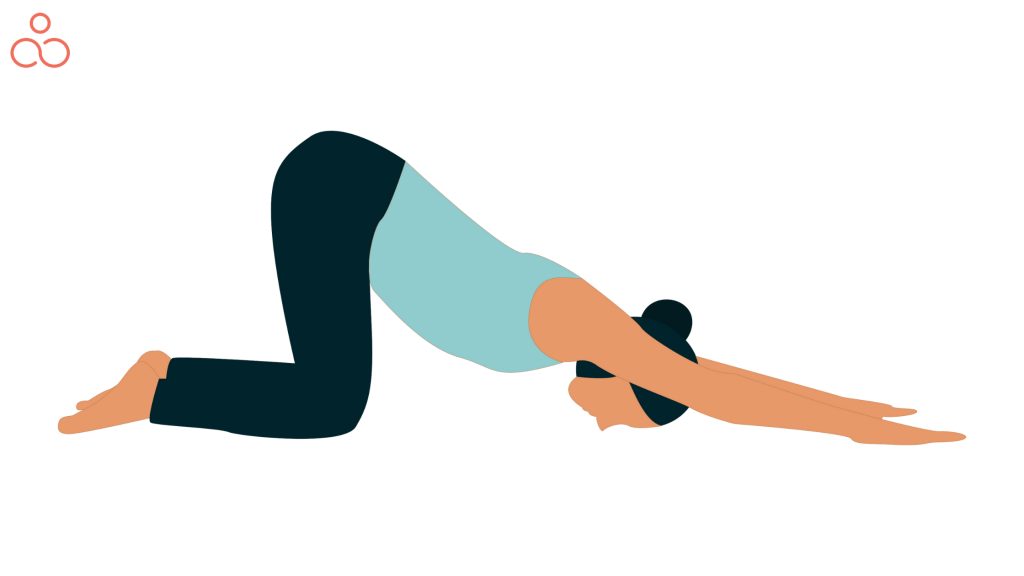
A recent study conducted by researchers at the University of Michigan found that physical therapy and daily excercise (which could be yoga) may have beneficial effects on bowel movements. The study, conducted on a group of 15 healthy adult participants, showed that regular sessions of exercises and physical therapy improved participants’ ability to control their bowel movements, leading to fewer and less frequent episodes of incontinence. Additionally, the study showed that the regular practice resulted in participants having fewer episodes of abdominal pain and bloating. The researchers concluded that exercising could be an effective way to reduce symptoms of constipation and reduce the frequency of incontinence.
The posture of pooping in terms of Yoga
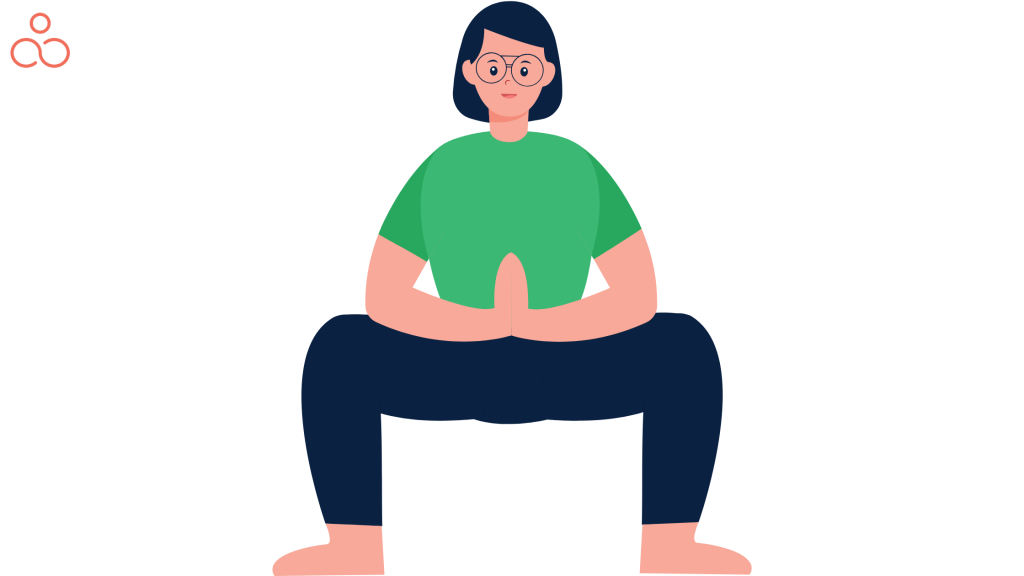
Pooping posture is important too. Sitting on a toilet that’s at a good height and angle is vital. Leaning inwards slightly can help your muscles relax, making it easier for everything to pass through. Traditional Indian style is like the yoga squat, where you squat on the ground and lean forward. This makes it easier for gravity to do its job. In Indian pooping, you lean forward on your heels. Yoga squatting is similar, as you squat down and lean in to open up your pelvic floor and ease digestion. Both of these methods help your body to relax, making emptying easier. Indian pooping also uses yoga positions and deep breathing to encourage your bowels to move. The poses ease the tension in your abs, and the breathing stimulates digestion and helps push waste out. It’s a helpful way to reduce constipation and keep your digestive system healthy.
Key differences between sitting and squatting posture
Sitting and squatting are both postures used for pooping, but there are a few key differences between the two.
| Sitting posture | Squatting posture |
Sitting posture for pooping involves a person sitting on the toilet with their knees bent and feet supported on the floor. | Squatting posture for pooping involves a person squatting over the toilet with feet flat on the floor. |
| When sitting, your hips and knees are bent at 90-degree angles. | When squatting, your thighs are parallel to the ground and your feet are flat on the floor. |
| Sitting is easier on the body and often more comfortable. | Squatting can be more effective for eliminating waste. |
| Sitting is the more comfortable option, but takes longer and is not as efficient. This position allows for maximum relaxation of the rectal muscles, leading to a quicker and easier evacuation of the bowels. | Squatting is a more natural position for pooping, and has been proven to be beneficial in terms of speed, ease, and effectiveness.This position requires more effort and energy to maintain the posture, but it is believed to provide a more complete evacuation of the bowels. |
What causes your poop to be irregular?
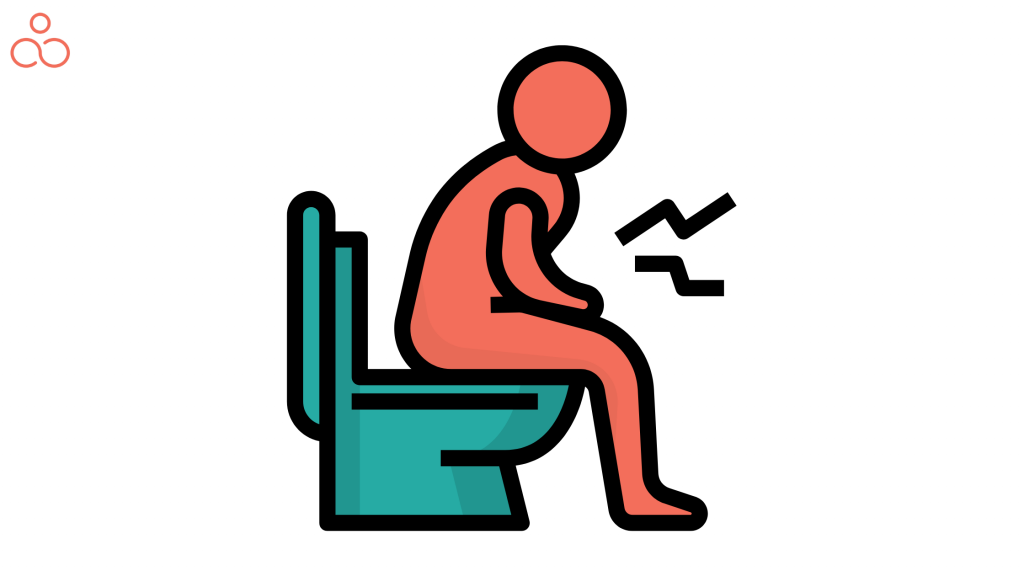
Irregular bowel movements can be attributed to various factors, including diet, lifestyle, and medical conditions. Making minor changes to your diet and lifestyle can help reduce the chances of having irregular poops.
- Eating too quickly or too much can cause irregularity.
- Eating a diet low in fiber can interfere with regularity.
- Certain lifestyle habits, such as eating a high-fiber diet than required, such as processed foods, refined carbs, and sugar, can hamper too.
- Sometimes, foods like beans and cruciferous (plants of the cabbage family) vegetables can all cause these issues.
- Eating foods that are difficult to digest can cause bloating and gas, which can lead to irregularity.
- A lack of physical activity can also contribute to irregularity.
- Certain medical conditions can also contribute to irregularity, such as irritable bowel syndrome, Crohn’s disease, and colorectal cancer can lead to irregular pooping, endometriosis(a painful condition caused by endometrial tissue growing outside the uterus) and food allergies.
- Stress, anxiety and depression can also lead to irregularity as they can disrupt the digestive system.
- Additionally, certain medications, including antidepressants, can cause the bowels to move slower than expected.
- Not drinking enough water can also contribute to irregular pooping.
- Constipation is often caused by some other lifestyle factors as well such as a lack of time for regular bathroom breaks and can result in painful, dry stools.
- Don’t be tempted to ignore the urge to go to the toilet – it can lead to constipation and painful bowel movements.
- The thyroid gland, situated in the front of the neck, is responsible for controlling the body’s metabolic processes. If it becomes underactive or hypothyroidism, it can cause constipation and weight gain.
- When insulin levels are insufficient, diabetes can become uncontrolled. This can increase blood sugar levels and damage nerves, resulting in constipation.
- Overusing laxatives weakens your intestinal movements, leading to a dependency and constipation.
- Hormonal changes can cause sluggish digestion, resulting in constipation.
How to make your poop regular through Yoga?
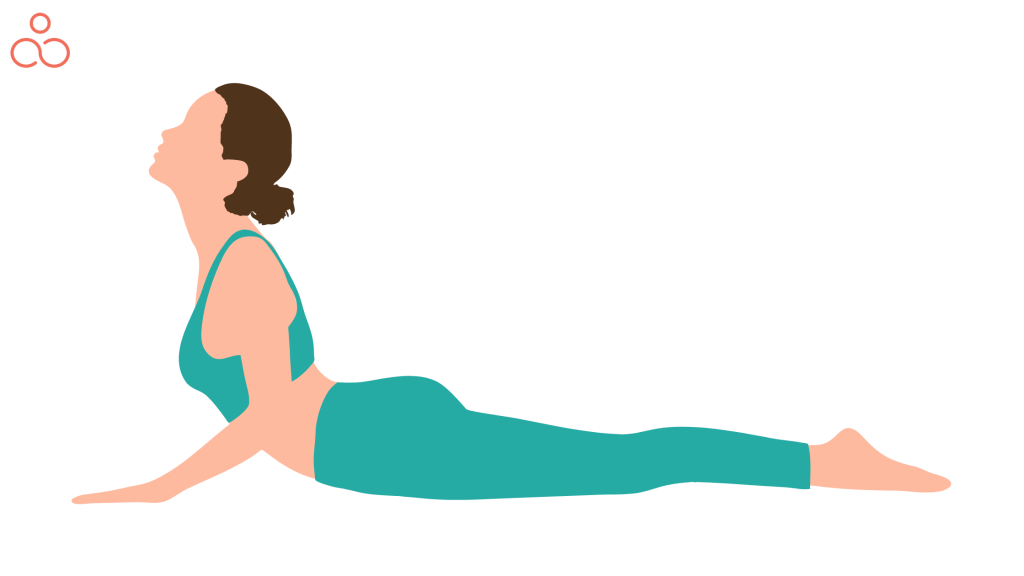
Regular pooping is an integral part of maintaining a healthy lifestyle. Luckily, there are a few ways to help with this. One such way is through Yoga. Yoga is a form of exercise that aids digestion and can be beneficial in making your poop regular. We are providing some tips to help you with this. By following these tips, you can use Yoga to make your pooping schedule more regular.
- Practice yoga in the morning and evening- Make Sure to practice Yoga regularly- Doing a few poses in the morning and evening can help your body regulate its digestion.
- Focus on poses that target the abdomen- These poses can help to stimulate the digestive system and make your pooping schedule more regular.
- Keep your digestion healthy with a balanced diet- Eating healthy foods, such as fruits and vegetables, can help keep your digestion balanced.
- Avoid eating processed food- Processed foods can be hard to digest and can contribute to digestive issues. Focus on eating whole, unprocessed foods instead.
- Start with a warm-up – Warming up your body and digestive system before each practice can help you ease into the movements.
- Connect to your breath – Connecting to your breath is a crucial part of Yoga. During practice, take deep breaths to help you relax and focus on the poses.
- Focus on hip openers – Hip openers can help to relax your digestive system. Spend extra time focusing on poses like the Pigeon or Bound Angle.
- Focus on twists – Twists can help to massage your abdominal organs and help to stimulate your digestive system.
- Practice inversions – Inversions can help to reduce stress and help to move energy through your body. Make sure you practice these poses safely.
- Drink plenty of water – Hydrate before, during, and after your workout for optimal health benefits. Staying adequately hydrated helps rid your body of toxins and keeps your digestive system functioning smoothly.
- Avoid overeating – Overeating food can put a strain on your digestive system. Make sure to eat smaller meals throughout the day and avoid eating late at night.
- Exercise regularly – Regular exercise can help to promote regularity. Make sure to include some form of exercise in your daily routine.
- Practice mindfulness – Mindfulness can help reduce stress and anxiety, which can contribute.
What are the benefits of Yoga regarding a clear bowel movement?
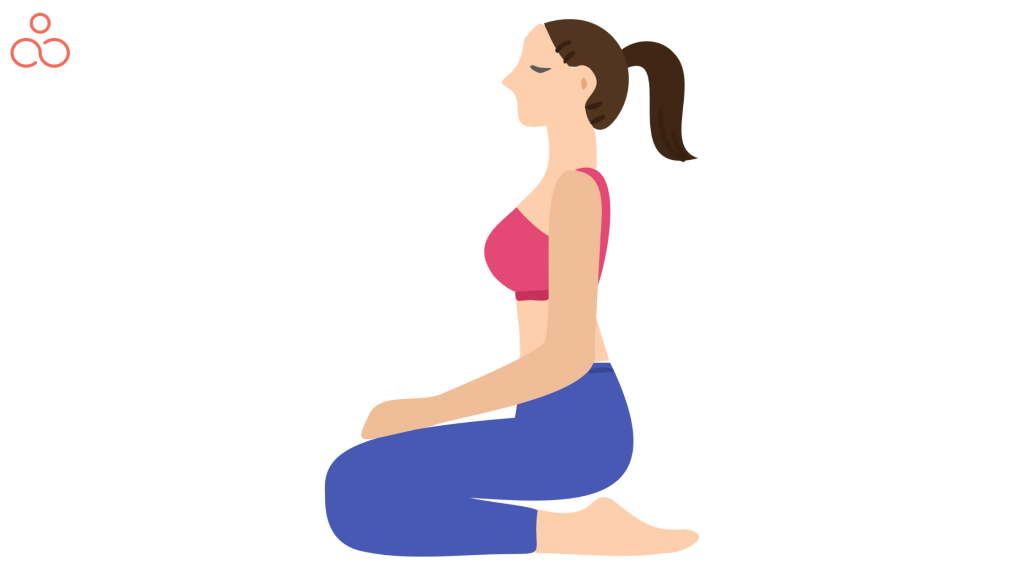
Doing Yoga can provide many benefits when it comes to regular pooping. Here are a few points to consider:
- Increases abdominal muscles flexibility and strengthens the core
- Yoga increases abdominal muscle flexibility and strengthens the core, which can help with regular bowel movements
- Reduces stress
- Yoga can help reduce stress, which can be a significant factor in constipation
- Increases the blood flow
- Yoga can help increase the blood flow to the digestive tract, aiding in better digestion
- Stimulates the lymphatic system
- Yoga can also help stimulate the lymphatic system, which is essential for removing toxins from the body
- Improves the functioning of the colon
- Lastly, Yoga can help improve the functioning of the colon, helping to regulate the movement of waste through the system.
- Regulates bowel movements
- Incorporating Yoga into one’s schedule allows for regular bowel movements and overall well-being
Yoga poses to clear your bowel movement
This article has picked 10 of the best Yoga poses for you. Practicing these poses regularly promotes regular bowel movements. Pay attention to your body and take care when doing Yoga. Respect your limits and always practice safely.
Cow Pose or Bitilasana
Cat cow pose helps massage and stretch the abdominal muscles, promoting regular bowel movements and helping relieve constipation. Cat cow pose also helps to improve circulation in the digestive area, which can help the body to better absorb nutrients from food. Practicing this Pose on a regular basis can help to ensure regular pooping and help maintain healthy digestion.
How to do it:
- Step 1: Start in a tabletop position, hands and knees on the floor. Ensure your wrists are directly below your shoulders and your knees are below your hips.
- Step 2: Inhale and arch your back, lifting your chest and gaze towards the ceiling.
- Step 3: Exhale and tuck your chin to your chest, rounding your back and bringing your belly towards the floor.
- Step 4: Inhale and come back to the tabletop position.
- Step 5: Exhale and repeat steps two and three-five times.
Downward Facing Dog pose or Adho Mukha Svanasana
Downward Facing Dog pose helps to stimulate the digestive system, improve posture and alignment, and strengthen the abdominal muscles. It also helps stretch and lengthen the spine and core muscles, improving overall digestion. Additionally, the inverted posture of this Pose helps to stimulate blood flow to the digestive organs, which can aid in the digestion process. Regular practice of Downward Facing Dog pose can help to keep your digestion regular and healthy.
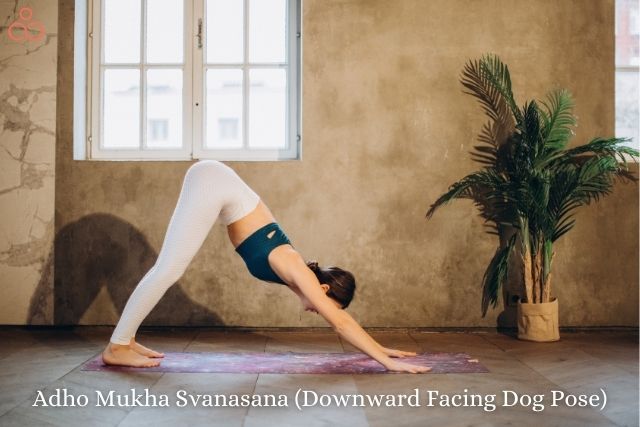
How to do it:
- Step 1: Start kneeling on the ground, and make sure your shoulders are aligned with your wrists, your hips are balanced with your knees, and your feet are spread apart.
- Step 2: Exhale and lift your knees off the floor. Reach your tailbone toward the ceiling, pressing your palms firmly into the floor.
- Step 3: Inhale and slowly lift your hips up and back, pressing your heels toward the ground. Keep your neck and spine neutral.
- Step 4: Slowly straighten your legs, pushing your hips up and back while keeping your palms firmly planted on the floor.
- Step 5: Keep your thighs and feet parallel and your neck neutral. Remain in this Pose for five to ten breaths. To exit the Pose, exhale and slowly lower your hips to the floor.
Child’s Pose or Balasana
Child’s Pose helps to relax the muscles in the abdomen and increase blood flow to the area. When done correctly, it can help to reduce bloating and gas and make it easier to pass stools. It can also help improve posture, strengthen the spine, and reduce stress. These contribute to a healthier digestive system, making it easier to pass stools regularly.
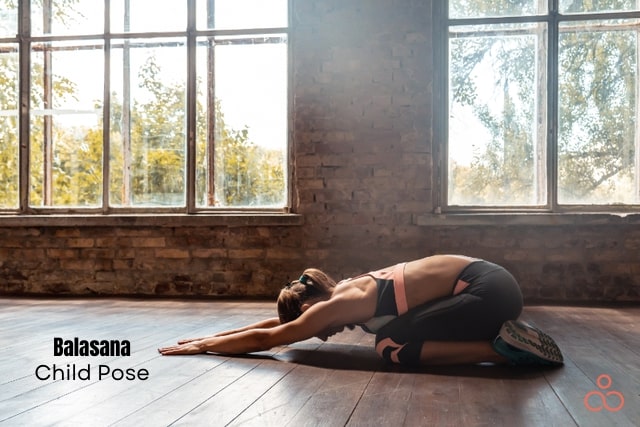
How to do it:
- Step 1: Start on your hands and knees. Your knees should be hip-width apart, and your hands should be shoulder-width apart.
- Step 2: Slowly lower your hips back to your heels and lower your forehead towards the ground.
- Step 3: Reach forward with both arms and let go of any tightness in your shoulders.
- Step 4: Hold the Pose for as long as feels comfortable.
- Step 5: To come out, slowly raise your head and torso back to your hands and knees.
Seated Forward Bend pose or Pashchimottanasana
A seated Forward Bend helps the intestines relax, which can help relax the body and create a greater sense of calm. It also helps to stretch out the abdominal muscles, which can help to reduce any potential constipation. In addition, this can also be beneficial for digestive health, potentially aiding in the regularity of digestion. Practicing this Pose regularly can help to keep your digestive system running smoothly and avoid any potential issues with pooping.
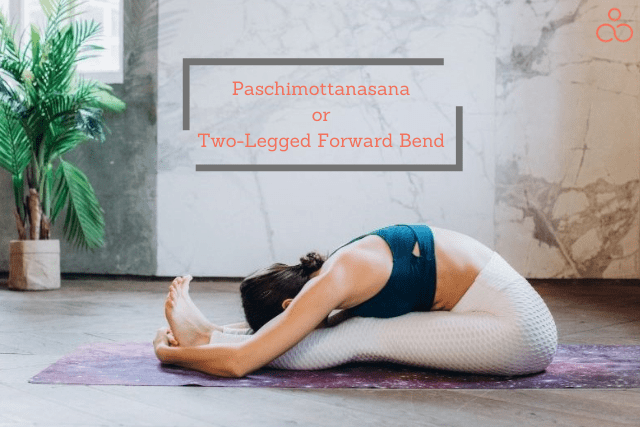
How to do it:
- Step 1: Start seated on the floor with your legs stretched out in a straight line ahead of you.
- Step 2: Reach your arms straight up and over your head, reaching your fingertips towards the sky.
- Step 3: Gradually lean your torso forward, keeping your spine straight and extending your arms in front of you.
- Step 4: As you fold forward, proceed to walk your hands forward, keeping your arms and back straight.
- Step 5: When you’ve folded as far as is comfortable, hold the Pose for a few breaths. Step away from the Pose by gradually withdrawing your hands and then slowly lifting your torso back up, reaching your arms overhead again.
Half Lord of the Fishes Pose or Ardha Matsyendrasana
Half Lord of the Fishes Poses helps to strengthen the abdominal muscles and the pelvic floor, which helps to improve bowel movements. It also helps to promote good posture and strengthens the core muscles, which helps to reduce lower back pain. Additionally, it helps to reduce stress and tension in the body, which can help with overall digestion and health. Finally, it helps to promote relaxation, which can help to reduce constipation. Overall, this yoga pose can be very beneficial for regular pooping.
How to do it:
- Step 1: Get settled in a position that’s comfortable for you. Plop down with your legs stretched out in front of you, and get started!
- Step 2: Gently flex your right leg and press the sole of your right foot against the floor against your left inner thigh.
- Step 3: Place your left hand behind you and your right hand on the floor beside your right knee.
- Step 4: Gently raise your right leg away from the ground and draw your right shin closer to your torso.
- Step 5: Hold the Pose for 5-10 breaths, then slowly lower your right knee back to the floor and repeat on the other side.
Boat Pose or Navasana
Boat Pose helps to stimulate the digestive system while promoting regular elimination at the same time. This Pose helps to relax the abdominal muscles. It encourages deeper abdominal breathing, which further helps to increase circulation to the lower abdomen and helps to improve digestive function. Boat Pose can help to reduce constipation, bloating, and abdominal discomfort. It can also help to improve overall digestion and help to reduce the risk of digestive issues. Regular practice of this Pose can help to improve digestion and regular pooping.
How to do it:
- Step 1: Begin by sitting in a comfortable position, either on the floor or in a chair. Make sure your spine is long, and your chest is open.
- Step 2: Bring your hands to your shins and slowly bend your knees, bringing your feet flat to the floor.
- Step 3: As you bend your knees, place your hands on the floor, making sure your palms are facing down.
- Step 4: Lift your hips up and back. Then use your core to press your feet and hands into the floor as you push your chest towards your thighs.
- Step 5: Hold this Pose for a few breaths, keeping your back long and your chest open. When you are finished, slowly roll your spine back down to the floor.
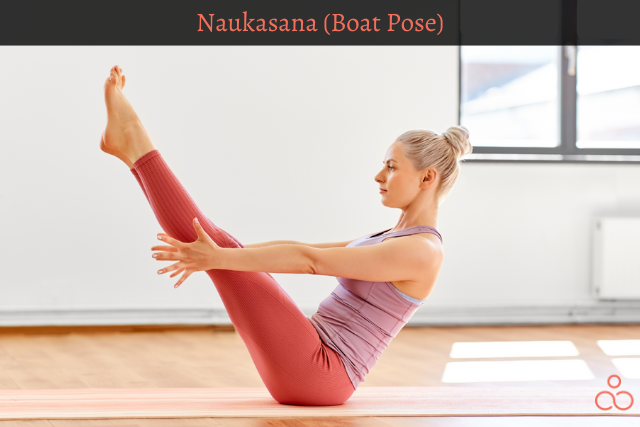
Bow Pose or Dhanurasana
Bow Pose helps to stimulate the digestive system, improves the flow of energy through the body, and increases abdominal strength and flexibility. Additionally, Bow Pose can help improve circulation to the abdominal organs, aiding digestion and relieving constipation. Doing this Pose routinely can help keep your digestion running smoothly and efficiently.

How to do it:
- Step 1: Begin in a kneeling position, with your thighs perpendicular to the floor and your knees hip-width apart.
- Step 2: Slowly lean forward, allowing your arms to reach the ground in front of you.
- Step 3: Bring your arms up and back, pressing your palms together so that your arms form an arch.
- Step 4: Place your forehead on the floor and keep your arms as straight as possible.
- Step 5: Sustain the Pose for several breaths, then gradually and mindfully return to the original position.
Corpse Pose or Savasana or Mritasana
The corpse pose helps to strengthen the abdominal muscles and help with regular bowel movements. It can also help to increase flexibility, improve digestion, and reduce stress. Rest in the corpse pose with your back on the floor and your toes touching the ground. Let your arms relax by your sides. It is essential to remain in the Pose for at least five minutes, as this will help to relax the body and mind. The corpse pose can also be done while sitting, with your legs crossed and your hands resting on your thighs. Allowing your body to relax in this position will help to increase your overall well-being.
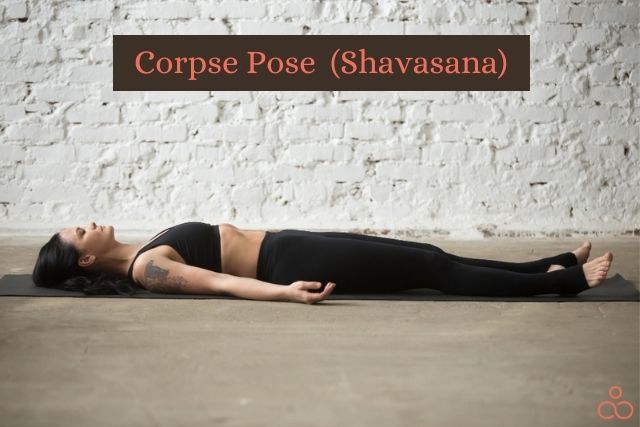
How to do it:
- Step 1: Begin in a seated position with your legs crossed in front of you.
- Step 2: Place your hands on your abdomen and close your eyes.
- Step 3: Inhale deeply and raise your arms to the sky, stretching your spine.
- Step 4: Exhale and bring your arms back down to your sides, arching your spine and pushing your chest forward.
- Step 5: Take a deep breath and savor the posture, feeling the strain in your spine and tie it to the ground. Hold for several breaths and then release.
Thunderbolt Pose or Vajrasana
Thunderbolt Pose helps with regular pooping. It helps to open the hips, which can improve digestion and help regulate the bowels. The Pose is also beneficial for those who suffer from constipation due to its calming and digestive properties. It also helps to relieve stress, which can contribute to digestive issues. Practicing this Pose regularly can help you maintain regular pooping.
How to do it:
- Step 1: Begin in Mountain Pose. To do this, stand with your feet together and your arms at your side. Draw your shoulder blades together and lift your chest.
- Step 2: Bending your knees, lower your form into a squatting position. Put your hands on the floor and spread your knees apart.
- Step 3: Lift your arms up and reach your fingertips to the sky. Keep your spine straight and engage your core.
- Step 4: Shift your weight onto your hands and lift your feet off the ground. Keep your feet together and spread your fingers wide.
- Step 5: Hold the Pose for a few moments and slowly lower your feet back to the ground.
Bridge Pose or Setu Bandha Sarvāṅgāsana
Bridge pose helps to regularize your pooping habits. It helps to relieve constipation and stimulate digestion. It is excellent for relieving tension in your lower abdomen and allowing for the release of any trapped gas or bloating. It also helps to increase circulation in your abdominal area, which helps to move food through your digestive system more quickly. Bridge pose also benefits overall flexibility, as it stretches your chest, shoulders, neck, and hips.

How to do it:
- Step 1: Begin by lying on your back with your knees bent and your arms at your sides.
- Step 2: Lift your hips off the ground, pressing your feet and arms into the floor.
- Step 3: Keep your hips raised and slowly straighten your legs.
- Step 4: Hold the Pose for 30 seconds to one minute, breathing deeply.
- Step 5: To come out of the Pose, slowly bend your knees and lower your hips back to the ground.
Wind relieving pose or Pavanmuktasana
Wind relieving is a yoga pose that can help you with pooping. It helps to reduce abdominal pressure, which can make it easier to pass a stool. It also helps to relax the pelvic floor muscles, which can make it easier to relax and pass a stool. Moreover, it can help to reduce any cramping and spasming in the pelvic region. To do the wind relieving pose, lay down on your back and bring your knees up to your chest. Hold your knees in place with your hands and stay in this position for up to five minutes. This pose can help to reduce constipation and can even help to reduce abdominal pain. So, if you’re having trouble pooping, give the wind relieving pose a try.
How to do it:
- Step 1: Lie down on your back on a flat surface.
- Step 2: Bend your knees and bring them close to your chest.
- Step 3: Take a deep breath and as you exhale, hug your knees into your chest.
- Step 4: Hold the pose for a few breaths, focusing on releasing any tension in your lower abdomen.
- Step 5: To come out of the pose, exhale and slowly lower your knees to the floor.
FAQ’s
Is it normal to poop right after Yoga?
Yes, it is normal to poop right after practicing Yoga. This is because Yoga helps to stimulate your bowels and move food through your digestive tract, leading to the urge to poop. It is also possible that the yoga postures were squeezing the bowels, leading to the urge to poop. However, you may be experiencing frequent or unusual bowel movements after Yoga. In that case, it is best to consult your doctor to make sure everything is okay.
Does hot Yoga make you poop?
Hot Yoga can undoubtedly make you feel like you need to go to the bathroom. The heat and intensity of the poses can lead to increased blood flow to the digestive system, which can stimulate peristalsis or the waves of muscular contractions that help move food through the intestines. Deep breathing and focus on the body can also help relax the body’s muscles, leading to better bowel movements. Ultimately, it is difficult to say for sure if hot Yoga explicitly makes you poop. Still, it can definitely help increase regularity in your digestive system.
Does Yoga really make you poop?
Yoga has long been associated with improved digestive health, and anecdotal evidence suggests that it can make you poop. Studies show that Yoga can help increase peristalsis, the involuntary muscular contractions that move food through the digestive system. It can also benefit your mental health, promoting feelings of calm and relaxation which can contribute to digestive problems. So, if you’re looking for ways to improve your digestive health, consider adding Yoga to your routine.
How to make pooping a routine through Yoga?
One of the best ways to make pooping a regular routine is to practice Yoga. Specific poses and breathing techniques can help to stimulate the digestive system and make bowel movements easier. Kundalini yoga is an excellent choice for this, as it focuses on working with the energy of the body to bring about physical and emotional balance. Asanas like the fish pose and the cobra pose help to massage the internal organs and stimulate digestion. Pranayama breathing exercises like kapalbhati and nadi shodhana are effective ways to soothe the mind and reduce anxiety, which can also positively affect digestion. Regular yoga practice can help keep your body and mind in balance while also making pooping a more regular and pleasant experience.
Can you control excessive pooping through Yoga?
Some people believe that Yoga can help with constipation and other digestive issues. It’s thought that certain poses and breathing techniques can help to stimulate the digestive system and promote regularity. Suppose you’re interested in trying Yoga to help with your pooping habits. In that case, it’s best to speak with a qualified instructor to get personalized recommendations.
Can you poop regularly without doing even Yoga?
Despite Yoga’s many benefits, regular bowel movements can be achieved without practicing Yoga. Consuming a balanced diet with enough fiber and drinking a lot of water can assist with keeping your bowels clean and healthy. Additionally, physical activity such as walking, jogging, and swimming can help move the food through your intestines, which can help promote regularity.
Conclusion
All in all, Yoga is an excellent way to give your digestive system a helping hand. Regular practice can make pooping more effortless and comfortable, boosting your confidence in that department. So why not give it a go? You never know what benefits you might find!

